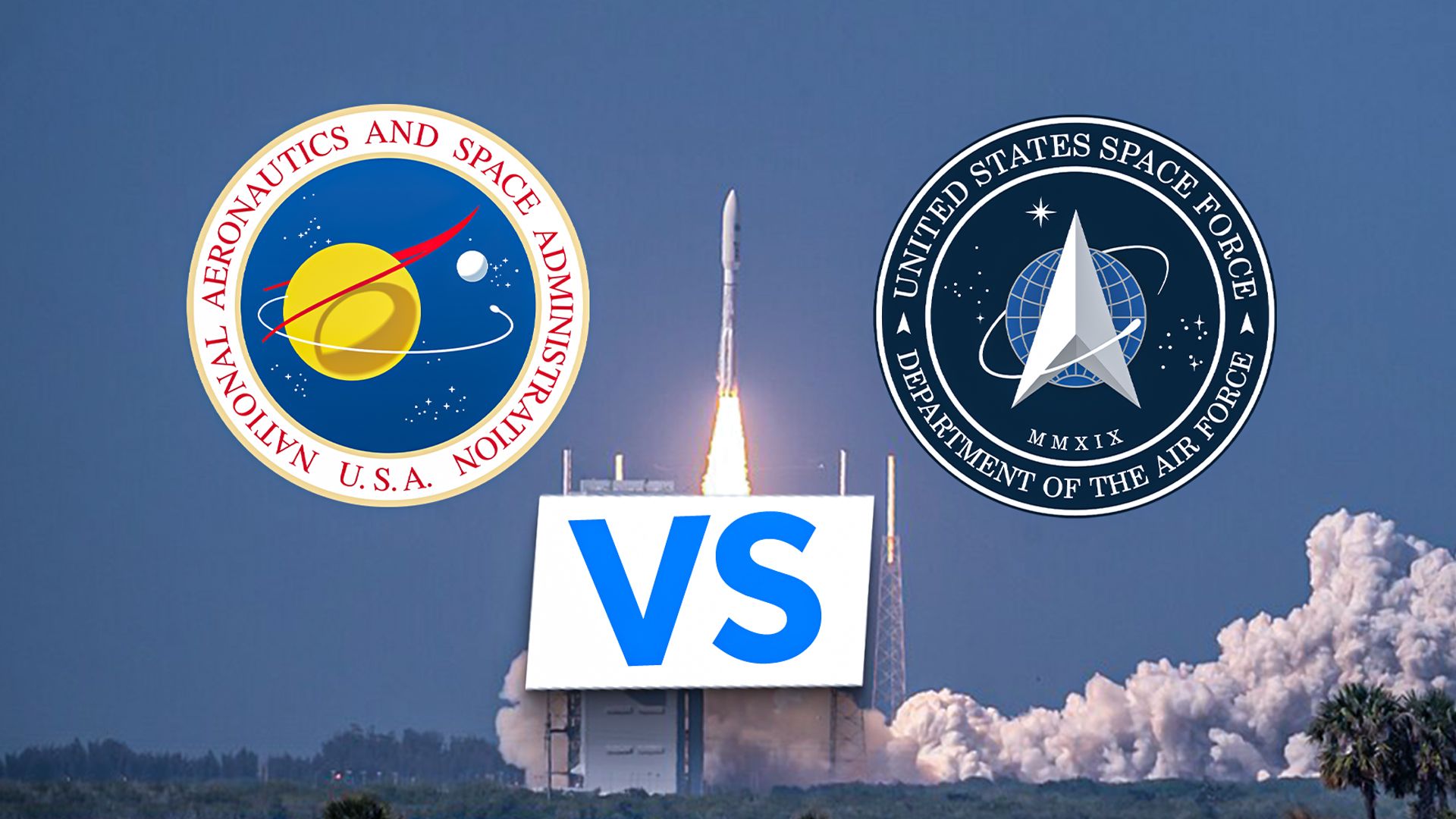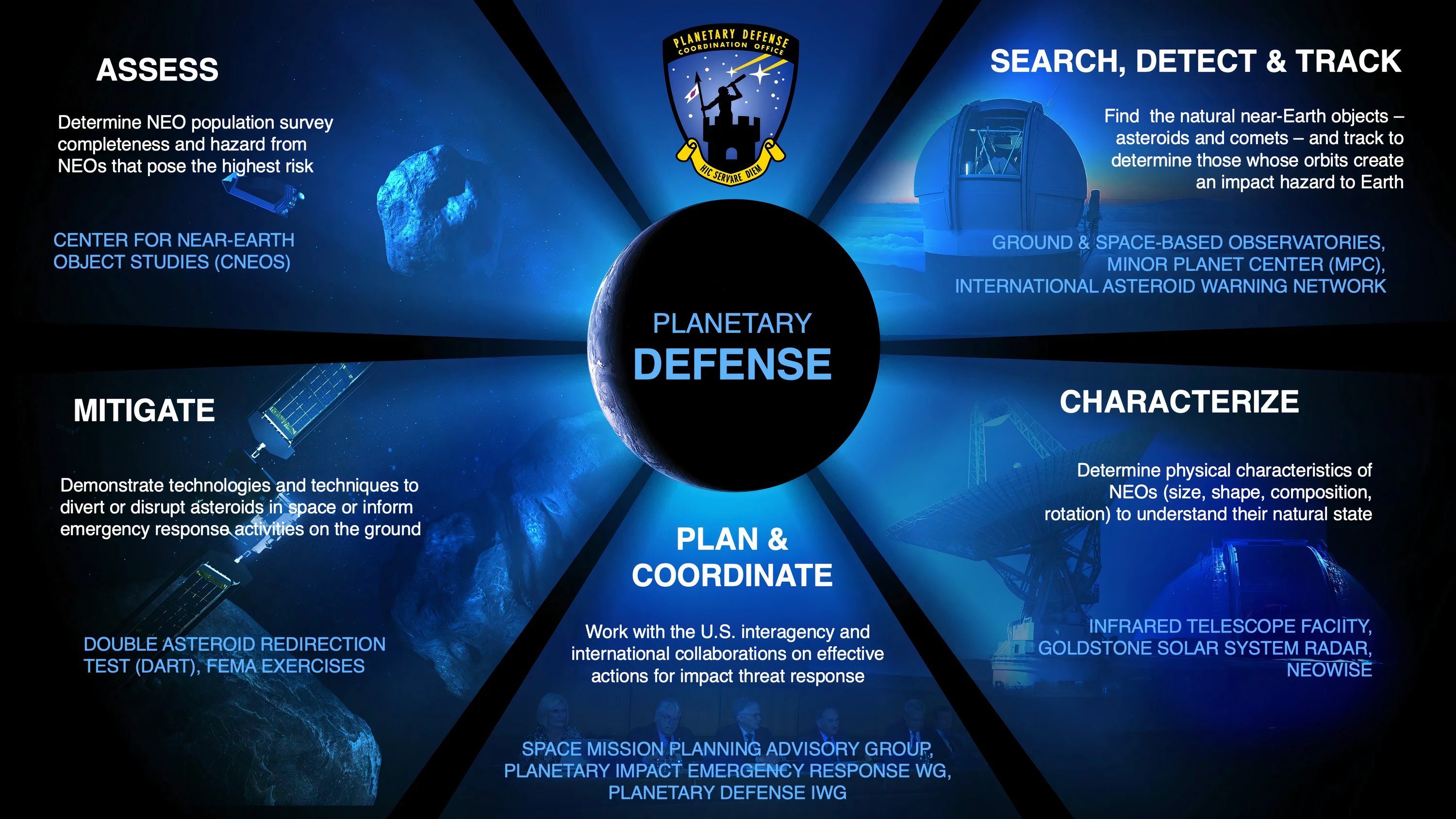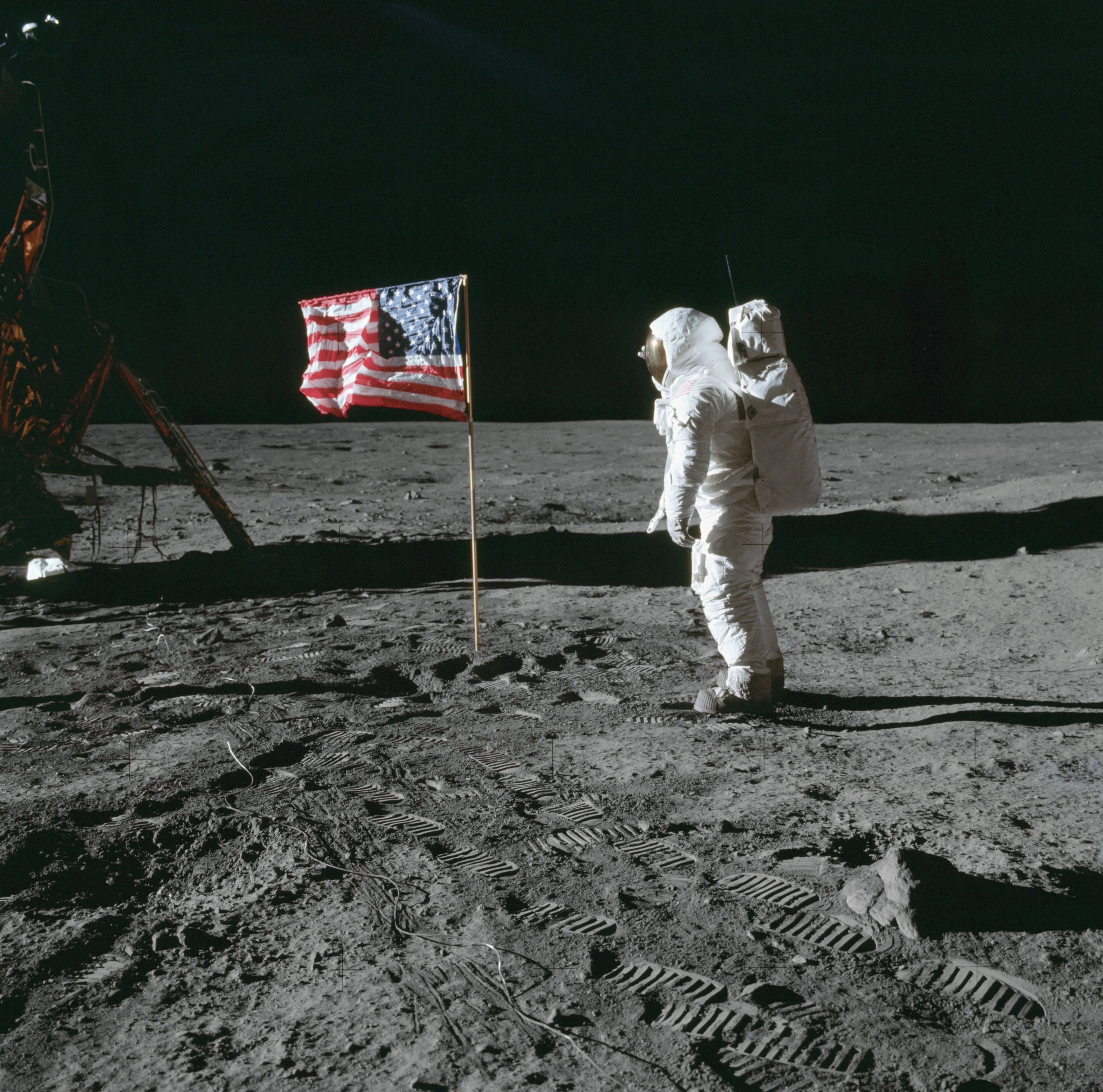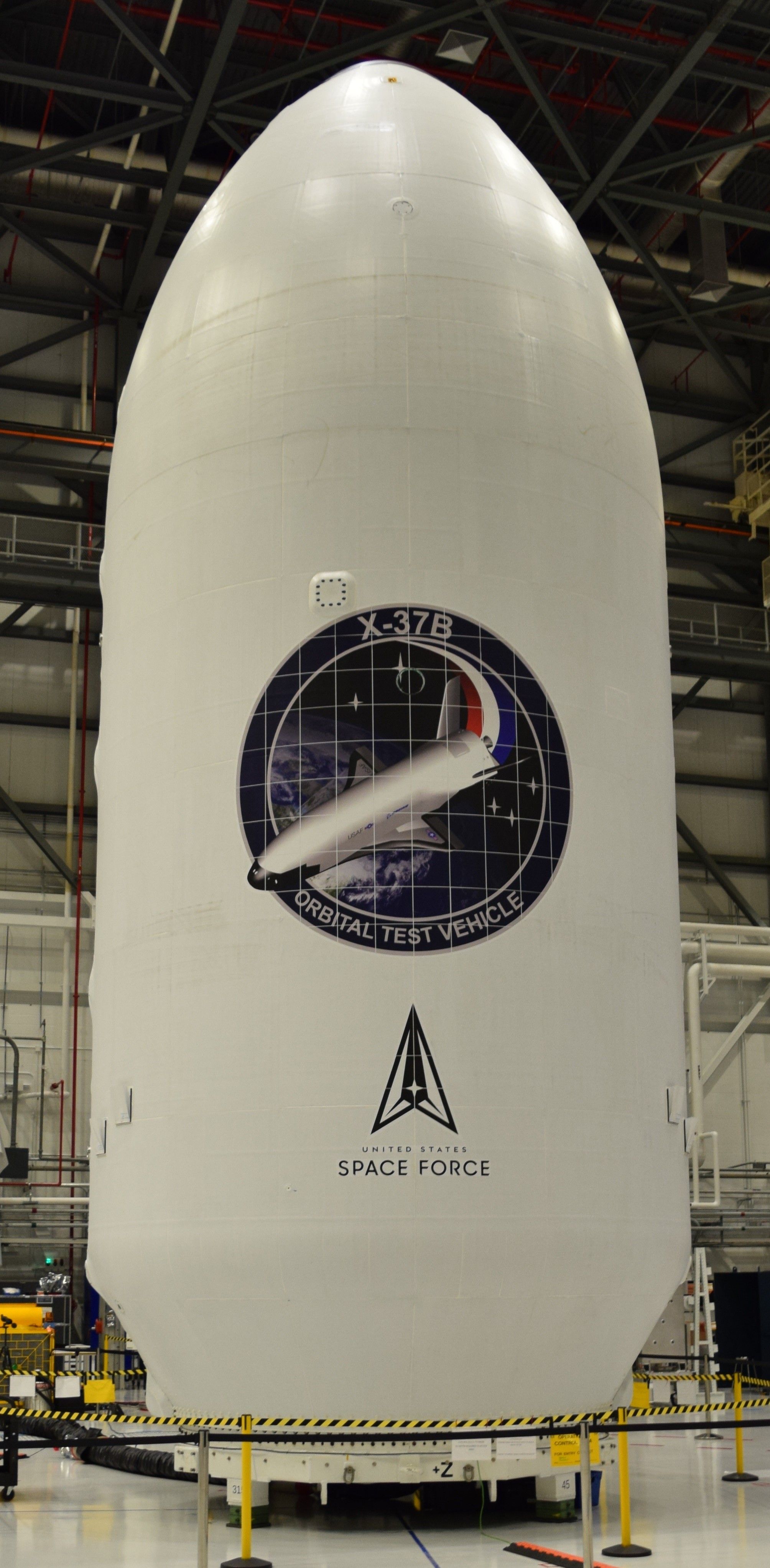In the vast expanse of the final frontier, two organizations stand at the forefront of American space endeavors- the National Aeronautics and Space Administration (NASA) and the United States Space Force (USSF). While both organizations seek to strengthen our understanding of the galaxy, build upon our cosmic capabilities, share certain resources, and even launch space spacecraft from shared stations, their core objectives are worlds apart. In this article, we’ll explore five areas in which NASA and the USSF diverge.
1
Self Defense
Defending our planet and defending our nation
Imagine a colossal rock hurtling towards Earth, reminiscent of the one that wiped out the dinosaurs some 66 million years ago. This scenario forms the crux of NASA’s mission in planetary defense. NASA’s Near-Earth Object Observations Program (NEOOP) is tasked with identifying and assessing threats from near-Earth objects (NEOs) like asteroids and comets, protecting Earth from potentially catastrophic collisions with asteroids or other celestial bodies. This responsibility involves monitoring near-Earth objects and developing strategies to mitigate potential impacts.
Photo: NASA
Established as the sixth branch of the US military in 2019, the USSF has a different mission: to “Secure our Nation’s interests in, from, and to space.” With eyes beyond our atmosphere, the Space Force ensures that satellites remain operational, communication systems stay intact, and space-based technologies continue to function in the interest of national defense.
Their vigilance extends to protecting against potential threats, including cyberattacks and jamming from adversaries and ensuring the security of space assets critical to national security. Check out the video below for more about the USSF mission.
2
Celestial Observers
While both launch satellites into orbit, they serve very different purposes
NASA utilizes a diverse array of satellites, including Earth observation satellites, like the Landsat series, to monitor the dynamic processes of our planet’s surface and ecosystems. For instance, NASA’s satellites meticulously monitor forests, oceans, and shifting sand dunes, providing crucial insights into climate change, environmental shifts, and natural disasters. They observe the ebb and flow of floodwaters, the melting ice caps, and even the migratory patterns of wildlife. This data not only enriches our scientific understanding but also aids in global conservation efforts and associated policies.
NASA also boasts space probes that venture into the depths of our solar system to enter the orbit of other planets and send back breathtaking images and data. One such craft is NASA’s Europa Clipper, scheduled to launch on October 10, 2024, and enter Jupiter’s atmosphere on April 20, 2030. The Europa Clipper will orbit Jupiter nearly 50 times to learn more about Europa, one of Jupiter’s four moons. NASA hopes images and data from the Europa Clipper will indicate whether a subsurface ocean beneath Europa’s icy shell could support life. Learn more about this fascinating mission in the video below.
In contrast, the mission of the USSF centers on security, strategy, and vigilance. While they, too, employ satellites with similar cutting-edge sensors, their focus is markedly different. The Space Force’s satellites are interstellar watchdogs, monitoring specific geopolitical hotspots and potential threats. Instead of painting broad scientific canvases, they zero in on precise locations to gather intelligence critical for national security.
Space Force satellites focus on potential adversaries and their activities to inform military and defense operations. For example, Defense Support Program (DSP) satellites, equipped with infrared sensors, serve as early warning systems that detect the heat plumes of missile launches and send alerts to initiate strategic responses. Such rapid intelligence is invaluable, safeguarding nations by providing crucial seconds that could mean the difference between peace and conflict.
3
There’s space, and then there’s cyberspace
The US Space Force must contend with both
NASA’s realm is physical space, exploring planets and galaxies, pioneering manned and unmanned missions to explore celestial bodies, deepening our understanding of planetary systems, and searching for extraterrestrial life. NASA conducts experiments aboard the International Space Station, utilizes space-based telescopes to study the universe, and has robots exploring the surface of Mars.
The USSF mission extends its operations into the digital universe, serving a dual mission encompassing space and cyberspace. The USSF is charged with protecting the nation’s digital infrastructure, ensuring the security of communications and data crucial to space operations. This dual focus on space and cyberspace highlights the modern complexities of military operations, where digital threats pose as significant a risk as physical ones.
4
Mission readiness
NASA missions are planned well in advance, while the USSF is on guard 24/7
NASA is synonymous with meticulously planned missions that capture the world’s attention on launch day. These missions often require years of preparation, culminating in high-profile moments of scientific achievement, such as the moon landing on July 20, 1969. In the iconic image below, astronaut Buzz Aldrin poses beside the American Flag. The photo was taken by fellow astronaut Neil Armstrong.
Photo: NASA
The USSF mission also includes well-planned missions, such as launching its X-37B Orbital Test Vehicle-6 (pictured below) in December 2023, a platform for conducting various on-orbit experiments. These experiments help test new technologies and concepts in the space environment, contributing to the US Space Force’s capabilities in space.
Photo: USSF
However, the OTV-6 is just one aspect of a USSF that must operate on a continuous readiness model, prepared to respond to threats at any moment. This requires constant training, ensuring that personnel are always battle-ready.
5
The future of space exploration and defense
NASA and USSF missions take on new meaning
Now that we’ve looked at some of the differences between NASA and the USSF in the present, how will their missions evolve well into the future? It’s a question none of us can answer with great certainty but certainly fascinating to consider. Should NASA’s Europa Clipper find that the icy moon’s subsurface ocean could support life, a subsequent mission would likely attempt to find existing life in Europa’s waters. Such a discovery, even if bacteria or a tiny fish, would profoundly impact human attitudes toward the value and importance of NASA’s space exploration and our very existence in the universe.
Looking much further into the future, space colonization could one day become a reality, which would expand the USSF’s role dramatically. Ideally, space colonization would be a mission committed to international peace. However, as more countries and private entities become involved in space activities, international conflict in space cannot be ruled out. As nations and companies look to exploit space resources, such as minerals from asteroids or interplanetary water harvested from ocean worlds, competition could lead to conflicts over claims and rights.
Unlike Earth, space does not have established borders. The Outer Space Treaty of 1967 prohibits national appropriation of celestial bodies, but as colonization efforts progress, disputes over territorial claims could arise. The deployment of military assets in space, such as anti-satellite weapons or space-based missile defense systems, could lead to an arms race and increase the risk of conflict, a scenario Deputy Defense Secretary Kathleen Hicks hopes to avoid.
“I want to be clear: Conflict is not inevitable in space or anywhere else. And the United States of America is committed to preventing conflict through deterrence by making clear to our competitors that the costs of aggression would far outweigh any conceivable benefits.” – Deputy Defense Secretary Kathleen Hicks




